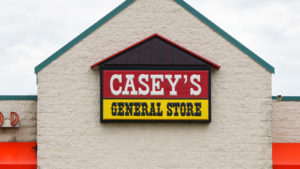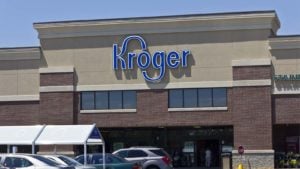Blue-chip stocks can help grow a portfolio when markets and the economy are performing strongly and protect an investor during economic decline and market volatility. This is because blue-chip companies do not fall as much as growth stocks in a market downturn and are often quick to recover when the stock market and economy rebound. For these reasons, holding blue-chip stocks in a portfolio is advisable.
Here are three stable blue-chip stocks to own through any market.
Costco Wholesale (COST)

Consumers flock to Costco Wholesale (NASDAQ:COST) in good economic times and bad. When times are tough, people shop at the warehouse club more often to take advantage of its wholesale pricing structure. Increasingly, people are buying more than groceries at Costco, lining up to purchase everything from gasoline to gold bars from the retailer. The company’s popularity has made COST stock a long-term compounder.
In the last 12 months, Costco stock has gained nearly 60%. Over five years, the share price is up 220%. COST stock steadily increased as the company consistently reports revenue and earnings growth. Most recently, Costco announced that its sales rose 8.1% in May from a year earlier to $19.6 billion. Management said the sales growth is driven by e-commerce, with online sales rising 15.3% year-over-year in May. In-person same-store sales climbed 6.4% higher from a year ago.
Costco also has a history of rewarding shareholders with special dividend payments. The most recent was a $15 per share dividend paid in January.
Casey’s General Stores (CASY)

Like Costco, Casey’s General Stores (NASDAQ:CASY) sells essential items that people need to buy no matter how the economy is performing. Specifically, Casey’s runs a chain of convenience stores and gas stations in the U.S., primarily in rural parts of Iowa, Missouri and Illinois. In all, the company operates more than 2,600 locations in 16 states. While gasoline is Casey’s main sales category, the company also sells pizza from its stores.
The business model is to come to Casey’s for gas and pick up a pizza while you’re at it. Pizza has proved to be an extremely popular and lucrative add-on to the core business, helping to drive financial results. Casey’s recently reported first-quarter earnings per share of $2.34, which beat analyst estimates of $1.74. Revenue totaled $3.6 billion, ahead of Wall Street forecasts of $3.45 billion.
Also like Costco, Casey’s General Stores is attentive to its dividend payments. Along with its Q1 results, Casey’s raised its quarterly dividend by 16.3% to 50 cents a share. The new dividend will be paid to shareholders of record on Aug. 1. CASY stock is up 50% over the last 12 months, including a 33% advance this year.
Kroger (KR)

For a more traditional grocery store chain, look to Kroger Co. (NYSE:KR). The company is the second-largest grocery store chain in the U.S. after Walmart (NYSE:WMT). As with the other names on this list, Kroger sells essential food and household items that people need in any economy or market. This has led the Cincinnati-based company to report consistently strong financial results.
This year’s first-quarter print was typical for Kroger. The company beat Wall Street forecasts across the board, reporting EPS of $1.43 on revenue of $45.27 billion. That bested analysts’ consensus forecast of $1.35 in earnings and sales of $44.87 billion. Kroger also reaffirmed its 2024 earnings guidance of $4.30 to $4.50.
A merger with rival grocery store chain Albertsons (NYSE:ACI) that dragged on since being announced in late 2022 weighed on KR stock. Despite those concerns, Kroger stock is still up 10% this year and 133% over five years. KR stock trades at a fairly low multiple of 17 times future earnings estimates. It also pays a strong quarterly dividend of 32 cents per share, giving the stock a yield of 2.5%.
On the date of publication, Joel Baglole did not have (either directly or indirectly) any positions in the securities mentioned in this article. The opinions expressed in this article are those of the writer, subject to the InvestorPlace.com Publishing Guidelines.
On the date of publication, the responsible editor did not have (either directly or indirectly) any positions in the securities mentioned in this article.
Joel Baglole has been a business journalist for 20 years. He spent five years as a staff reporter at The Wall Street Journal, and has also written for The Washington Post and Toronto Star newspapers, as well as financial websites such as The Motley Fool and Investopedia.
